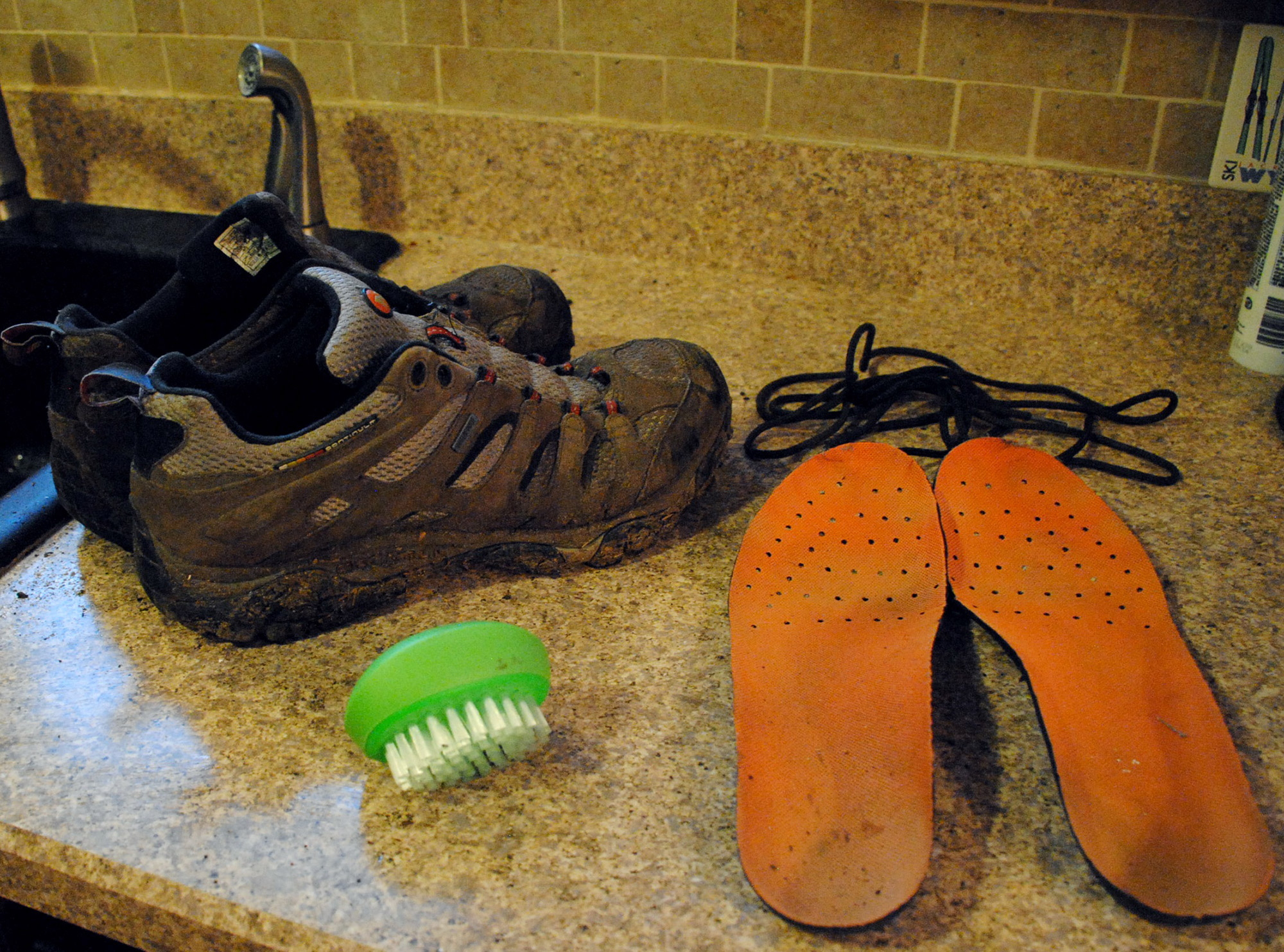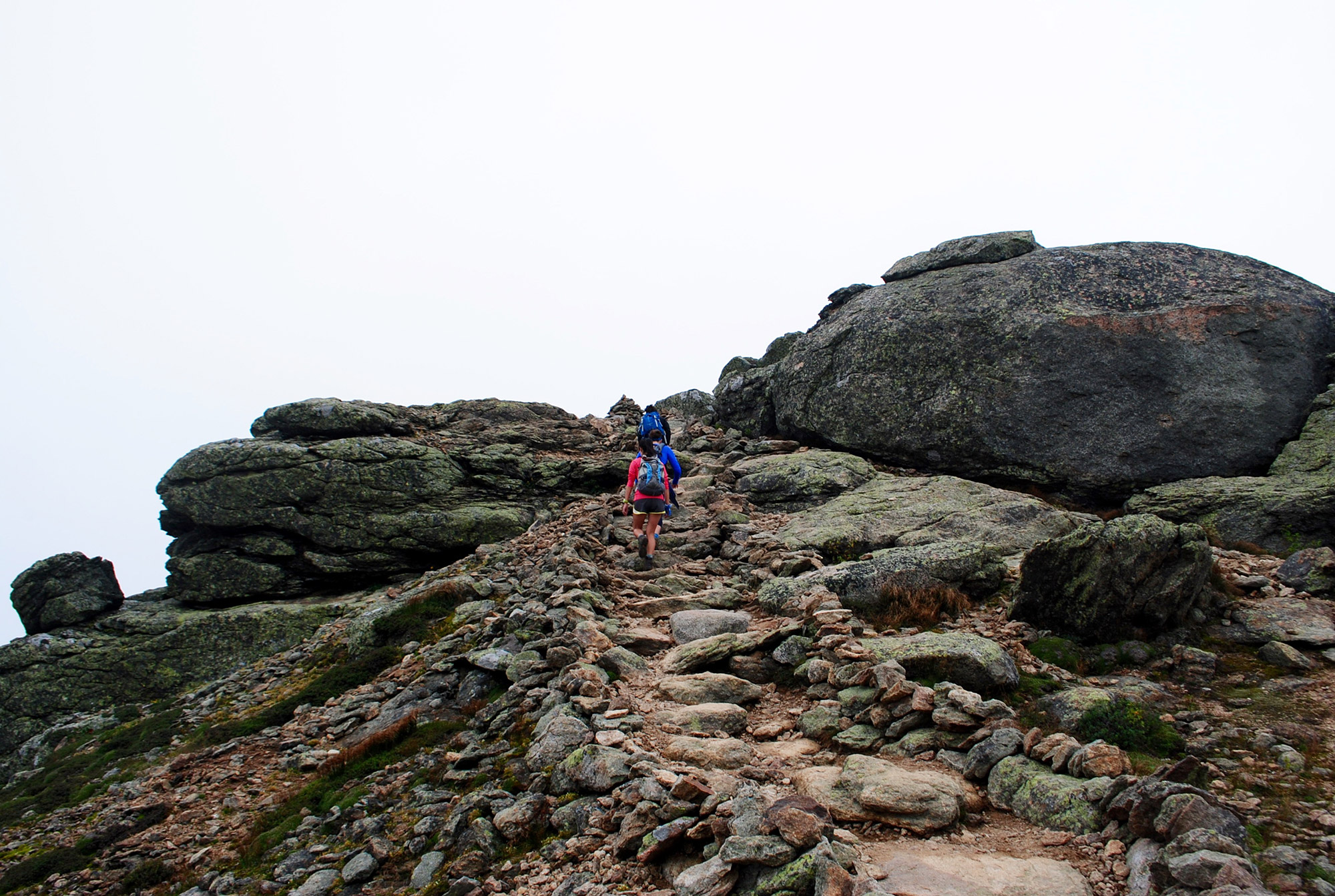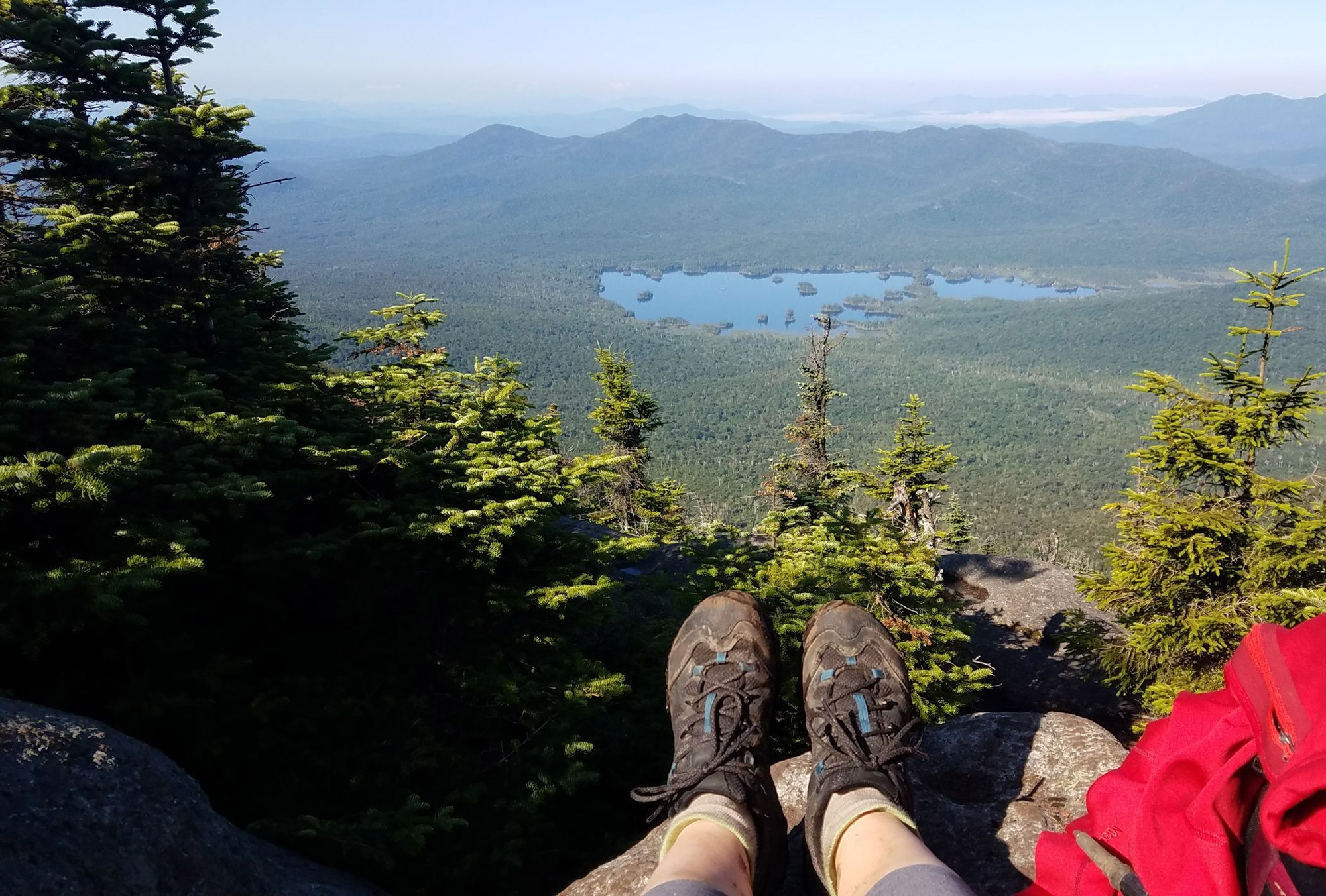Investing in a good pair of waterproof hiking boots or sneakers is a smart move. After all, your feet are in almost constant contact with the ground and elements while you’re walking or running. Getting them dirty is part of the adventure, a rite of passage even. But, did you realize you should be putting in some routine maintenance to preserve the waterproofness and materials? Mud can degrade leather by removing moisture, and leftover dirt and sand can actually break down shoe materials through constant friction while you walk. Don’t stress, though. A few minutes can go a long way in extending your shoes’ useful lifespan.

Cleaning Your Footwear
It’s important to keep your shoes clean and free of mud and debris. If you’re like most hikers, you probably change out of those squishy and smelly boots at the trailhead and stuff them in a plastic bag to be forgotten about in the trunk of your car. As tired as you might be after an epic hike or long run, it’s important to not let them sit for more than a day or two.
What you’ll need: water, a vegetable brush and/or toothbrush, and a mild soap or cleaner, like NIKWAX Footwear Cleaning Gel
How To: Begin by removing the insoles and laces. Next, clap your boots together or against a hard surface outside to remove any caked-on muck and stones or gravel that may be lodged in the treads. If sticky gunk like sap is an issue, throw them in the freezer to harden it, and then pry it off with a dull knife. Next, rinse them thoroughly with water while using a brush to scrub grime out of the tough spots. You can use a bit of soap or cleaning gel, but no harsh detergents that may damage boot materials. For extra-stinky boots, use a 1:2 mixture of vinegar and water. If you encounter dusty or sandy trails, use a vacuum with the hose attachment to remove the fine particles from both the outside and inside of your boot. Lastly, don’t neglect your shoes’ soles. Make sure to thoroughly clear them of trapped debris to ensure optimal traction and to prevent breakdown of the rubber.

Conditioning Your Leather Footwear
Full-grain leather, which looks smooth, is the only leather that requires conditioning. In turn, doing so keeps the material soft and pliable, which then prevents cracking.
What you’ll need: cloth and leather conditioner (NO oils like mink) like NIKWAX Leather Conditioner
How To: Leather conditioner is typically applied to dry boots, but check the manufacturer’s instructions first. Apply a generous but sensible amount of conditioner. While the conditioner helps keep the leather soft, too much can reduce the support the boot should provide. Use a damp cloth to remove excess, and buff to polish.

Protect and Waterproof Your Footwear
Luckily, you don’t need to re-waterproof your boots or sneakers after every use. You’ll know it’s time when water droplets no longer bead on the surface and, instead, are readily absorbed into the material.
What you’ll need: Waterproof wax or application like NIKWAX Waterproofing wax
How To: Begin with clean, wet boots with water fully soaked into the material. Generally, you’ll apply the waterproof agent, let it sit for a few minutes, and then, wipe away any excess, but be sure to follow the directions on the packaging. Waterproofing agents come in various forms, such as creams that get dabbed and liquids that get sprayed on.

Drying and Storing Your Footwear
It’s important to let your boots dry thoroughly to prevent mold from forming and materials from breaking down. A low-humidity environment is key, and you can speed up the process by using a fan or boot dryer or stuffing newspaper in each shoe. However, be sure to steer clear of heat, including fireplaces, which can damage materials and weaken adhesives. Dry the insoles separately, and do not put them back into the boot until both are completely dry. Then, store the boots in a well-ventilated area, and avoid garages and attics, both of which are notoriously damp and hot.

When Should I Retire My Footwear?
If you keep up on shoe maintenance, they’ll last forever, right? Not quite. So, how do you know when to toss ‘em? The number of miles a pair boots or sneakers has traveled can be a decent rule of thumb. You can expect hiking boots to get between 500 to 1,000 miles, while running shoes can typically see between 300 to 500 miles. These large ranges account for the many variables that cause wear and tear, such as ground surface and conditions. Visually inspect your shoes every so often for frayed, cracking, or separating materials. Cracking of the sole, compression lines, and worn treads also clearly indicate you’re due for some new kicks. Also, pay attention to your body. If your feet or joints hurt sooner or worse than usual or if you’re starting to get “hot spots,” it’s probably time to retire your boots.
Taking a little bit of time to care for and maintain your waterproof footwear ultimately prolongs its use. Following these basic steps will have you and your boots on the trail to happiness for years to come!
Sarah Quandt
Sarah learned an appreciation for all the Northeast has to offer from a young age, with her parents stuffing her in the family van for countless road trips. Despite being a little girl living in Upstate NY, she was somehow convinced she was destined to be a professional surfer. Thankfully she discovered the more geographically appropriate hobby of snowboarding while attending the X-Games in Vermont. She spends most of her time trail running, hiking and snowboarding but is always looking for a new challenge. As a current Adirondack 46er, Sarah is now working on solo-hiking all of the ADK high peaks. She balances her love for travel and adventure with her career as a civil/environmental engineer and resides in Saratoga Springs, NY with her husband and adorable dog.




